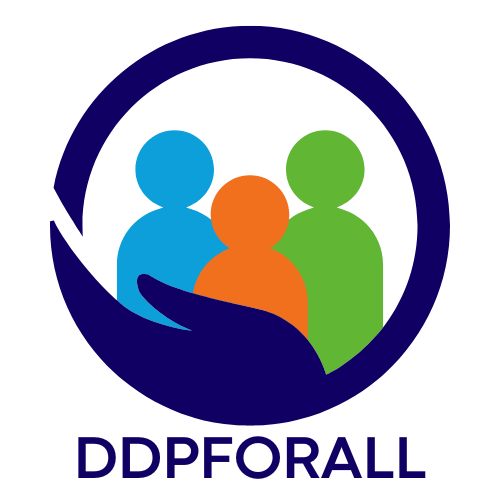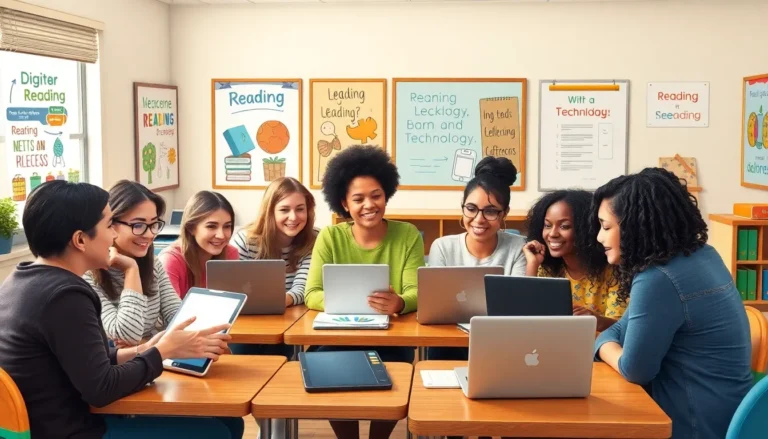Table of Contents
ToggleReading comprehension isn’t just a fancy term thrown around in classrooms; it’s the secret sauce to unlocking the world of knowledge. Imagine diving into a book and emerging with insights that could rival a TED Talk. It’s not just about skimming words; it’s about connecting the dots, understanding nuances, and occasionally laughing at the author’s terrible jokes.
Understanding Reading Comprehension
Reading comprehension represents a crucial skill that facilitates effective learning. Mastering it supports understanding concepts and extracting meaning from texts.
Definition and Importance
Reading comprehension refers to the ability to interpret and analyze written content. This skill extends beyond decoding words; it involves connecting ideas and recognizing the author’s intent. Without strong reading comprehension, individuals face challenges in grasping various materials, from textbooks to articles. Studies indicate that proficient readers typically achieve higher academic performance, underscoring the skill’s significance in educational success.
Components of Reading Comprehension
Several key components contribute to reading comprehension success. Vocabulary knowledge allows readers to understand and engage with text meaningfully. Background knowledge helps in making connections between new information and existing understanding. Additionally, the ability to summarize improves retention and comprehension of material. Strategies like questioning encourage critical thinking, which enhances overall reading effectiveness. Each of these components plays a vital role in developing robust reading comprehension skills.
Factors Influencing Reading Comprehension

Reading comprehension involves various factors that significantly affect how individuals understand written material.
Prior Knowledge
Prior knowledge plays a crucial role in how readers engage with texts. When individuals possess relevant background information about a topic, they interpret new concepts more effectively. Familiarity with themes or context allows readers to make connections, enhancing their overall understanding. Readers who actively relate personal experiences to the content tend to retain information better. Engaging with related concepts deepens comprehension and aids in later recall. Therefore, activating prior knowledge is essential for meaningful reading experiences.
Vocabulary Skills
Vocabulary skills directly impact reading comprehension. A robust vocabulary allows readers to decode and understand texts more efficiently. When individuals encounter unfamiliar words, they may struggle with overall meaning. Familiarity with word meanings enhances fluency and connects ideas within a text. Skilled readers often employ context clues to infer meanings, which promotes deeper understanding. Building vocabulary through reading diverse materials supports a comprehensive grasp of language and improves comprehension outcomes.
Text Structure
Text structure influences how readers digest information. Different formats, such as narrative, expository, or persuasive, guide readers in anticipating content organization. Recognizing signal words that indicate relationships between ideas aids in constructing meaning. Understanding typical frameworks enhances readers’ ability to navigate complex texts efficiently. For example, knowing that a cause-and-effect structure presents reasons followed by outcomes assists in better comprehension. Familiarity with various text structures allows readers to adjust their reading strategies accordingly, promoting engagement and understanding.
Strategies to Enhance Reading Comprehension
Strong reading comprehension skills can be developed through various strategies. These methods help readers engage with texts more effectively.
Active Reading Techniques
Active reading techniques improve understanding and retention of material. Highlighting key ideas captures attention and marks important concepts for review. Taking notes allows readers to summarize information concisely and encourage reflection. Asking questions when reading fosters a deeper connection with the text, prompting critical thinking. Visualizing content creates mental images, reinforcing comprehension through engagement with the material.
Teaching Methods
Effective teaching methods enhance reading comprehension in learners. Direct instruction on vocabulary expands word knowledge and strengthens understanding. Guided reading sessions encourage interaction and support diverse learning styles. Collaborative discussions allow students to share insights and clarify confusions. Implementing graphic organizers helps break down complex ideas and illustrates connections between concepts.
Use of Technology
The use of technology can significantly enhance reading comprehension. Educational apps provide interactive reading experiences, making engagement more appealing. Online forums facilitate discussions, allowing students to share interpretations and gain new perspectives. E-books often include built-in dictionaries, which help learners decode unfamiliar words instantly. Interactive quizzes reinforce learning by challenging readers to assess their understanding and recall information effectively.
Assessing Reading Comprehension
Assessing reading comprehension involves using various methods to measure a reader’s understanding of texts. These methods can range from standardized tests to informal assessments.
Standardized Tests
Standardized tests serve as a formal way to measure reading comprehension skills. They typically include multiple-choice questions, short answers, or essays that evaluate the ability to interpret and analyze texts. Scores from these tests provide quantitative data to compare students’ performance across grade levels and educational standards. The results often inform educators about individual or class-wide comprehension levels, guiding instruction. Many of these tests align with curriculum benchmarks, ensuring they reflect essential comprehension skills.
Informal Assessments
Informal assessments offer a flexible approach to gauge reading comprehension. Techniques such as observations, one-on-one discussions, or comprehension questions following readings help educators understand students’ grasp of material. These assessments can include reading journals where students summarize texts or retell stories in their own words. Such methods allow for subjective evaluation and direct feedback. Educators can adapt informal assessments to meet students’ needs, emphasizing areas for improvement while fostering a supportive learning environment.
Reading comprehension is a cornerstone of effective learning and personal growth. By developing strong comprehension skills individuals unlock the ability to engage deeply with texts and enhance their critical thinking. The interplay of vocabulary knowledge prior experience and text structure significantly influences how well one understands written material.
Implementing active reading techniques and leveraging technology can further enrich comprehension abilities. As educators and learners prioritize these strategies a more profound appreciation for reading emerges. Ultimately the journey toward mastering reading comprehension opens doors to academic success and lifelong learning.







